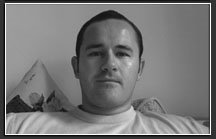GT:Africa .:. Pre-Senegal
 1st Stop
1st Stop
Planned Attendance: July 29th - August 2nd, 2007
From the 8th the 16th century, Senegal was part of the great empires of Ghana (not the country), Mali and Songhaï and was the first section of Africa to be reached by Europeans as Portugese explorers entered the mouth of the Senegal River in 1443. The next year, they settled near present-day Dakar on Île de Gorée where they set up a vital trading base. By the 16th century, the Dutch and French had also found their way to Senegal in search of their piece of the lucrative trade in gold, ivory and slaves.
After the slave trade was banned in 1815, the French powers forced locals to grow groundnuts (peanuts). After nearly 400 years of French rule, a marabout (Muslim holy man) known as El Hajj Omar Tall who has established a vast empire with Segou (today in Mali) as its center began to clash with French forces. Defeated in 1864, his followers continued in his footsteps setting off the Marabout Wars which lasted another three decades.
In 1884-85, the Berlin Conference saw the division of much of Africa amongst the colonial powers. Not surprisingly, Senegal was allocated to France. In 1887, France granted many Senegalese limited French citizenship. This opened the door to election to the French national assembly in Paris, an opportunity first taken advantage of by Blaise Diagne in 1914. A shrewd teacher and writer named Léopold Sédar Senghor was elected as Senegal's representative to the French national assembly. Senghor made secret deals with the marabouts in order to attain their support and prepare for the push for independence which was earned on June 20th, 1960.
The Stats:
Land Area: 192,000 sq km (about the size of South Dakota)
Average Temp: 24 / 31 (Low/High, Dakar in July)
Average Humidity: 84 / 66 (am/pm, Dakar in July)
Population: 12,521,851 (July 2007, est.)
Infant Mortality: 60.15 deaths per 1,000 live births
Life Expectancy: 56.69 years
Fertility Rate: 5 children born per woman
Literacy: 39.3% overall, 51.1% / 29.2% (Male/Female, 2003)
HIV/AIDS Prevalence: 0.8% (44,000 living with, 2003)
Infectious Diseases: Hep A, Typhoid, Dengue Fever, Yellow Fever, Malaria
Major Religion(s): Muslim - 95%
Official Language(s): French, Wolof
GDP per capita: $1,800 (2006, est.)
Occupation Distribution: 77% Agriculture, 23% Services (1990, est.)
Unemployment: 48% (2001, est.)
Pop. below poverty line: 54% (2001, est.)
Sources: Lonely Planet West Africa, CIA World Factbook


No comments:
Post a Comment